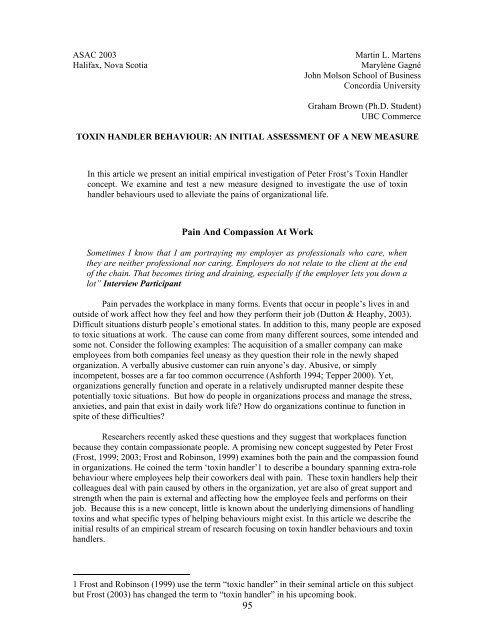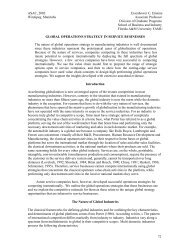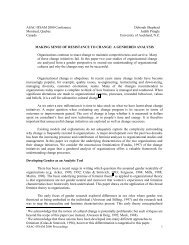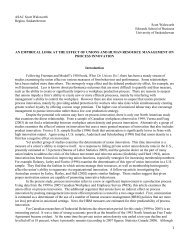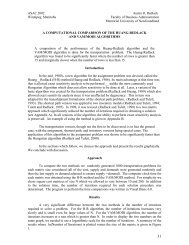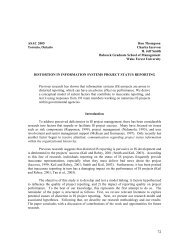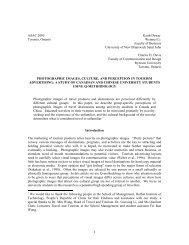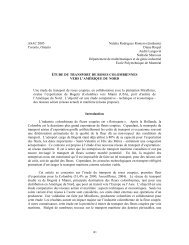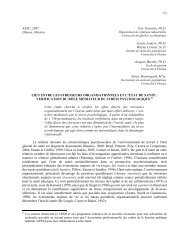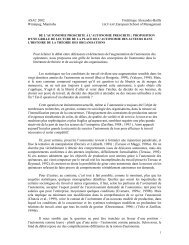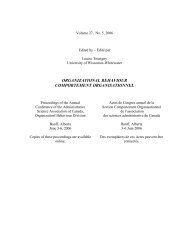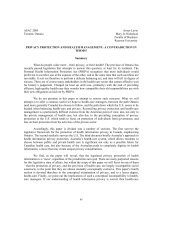Organizational Behaviour Comportement Organisationnel
Organizational Behaviour Comportement Organisationnel
Organizational Behaviour Comportement Organisationnel
Create successful ePaper yourself
Turn your PDF publications into a flip-book with our unique Google optimized e-Paper software.
ASAC 2003Halifax, Nova ScotiaMartin L. MartensMarylène GagnéJohn Molson School of BusinessConcordia UniversityGraham Brown (Ph.D. Student)UBC CommerceTOXIN HANDLER BEHAVIOUR: AN INITIAL ASSESSMENT OF A NEW MEASUREIn this article we present an initial empirical investigation of Peter Frost’s Toxin Handlerconcept. We examine and test a new measure designed to investigate the use of toxinhandler behaviours used to alleviate the pains of organizational life.Pain And Compassion At WorkSometimes I know that I am portraying my employer as professionals who care, whenthey are neither professional nor caring. Employers do not relate to the client at the endof the chain. That becomes tiring and draining, especially if the employer lets you down alot” Interview ParticipantPain pervades the workplace in many forms. Events that occur in people’s lives in andoutside of work affect how they feel and how they perform their job (Dutton & Heaphy, 2003).Difficult situations disturb people’s emotional states. In addition to this, many people are exposedto toxic situations at work. The cause can come from many different sources, some intended andsome not. Consider the following examples: The acquisition of a smaller company can makeemployees from both companies feel uneasy as they question their role in the newly shapedorganization. A verbally abusive customer can ruin anyone’s day. Abusive, or simplyincompetent, bosses are a far too common occurrence (Ashforth 1994; Tepper 2000). Yet,organizations generally function and operate in a relatively undisrupted manner despite thesepotentially toxic situations. But how do people in organizations process and manage the stress,anxieties, and pain that exist in daily work life? How do organizations continue to function inspite of these difficulties?Researchers recently asked these questions and they suggest that workplaces functionbecause they contain compassionate people. A promising new concept suggested by Peter Frost(Frost, 1999; 2003; Frost and Robinson, 1999) examines both the pain and the compassion foundin organizations. He coined the term ‘toxin handler’1 to describe a boundary spanning extra-rolebehaviour where employees help their coworkers deal with pain. These toxin handlers help theircolleagues deal with pain caused by others in the organization, yet are also of great support andstrength when the pain is external and affecting how the employee feels and performs on theirjob. Because this is a new concept, little is known about the underlying dimensions of handlingtoxins and what specific types of helping behaviours might exist. In this article we describe theinitial results of an empirical stream of research focusing on toxin handler behaviours and toxinhandlers.1 Frost and Robinson (1999) use the term “toxic handler” in their seminal article on this subjectbut Frost (2003) has changed the term to “toxin handler” in his upcoming book.95


